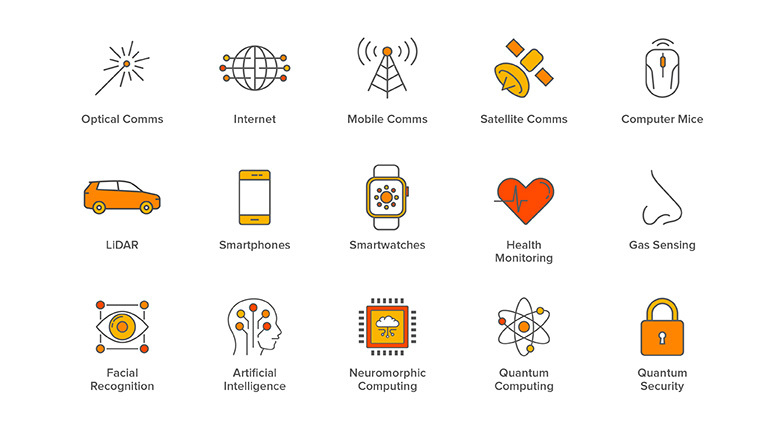Artificial Intelligence
Future Telecoms
Quantum
Future telecoms 2025 to 2026: from faster networks to thinking infrastructure
Reading time: 7 mins
From transforming data centres to driving optical communications innovations, compound semiconductors are revolutionising the sector
As the world races toward advancements in artificial intelligence (AI) and quantum computing, the technology fuelling these breakthroughs is evolving rapidly. One often overlooked but crucial component of this progress is the role of compound semiconductors. From revolutionising AI data centres to enabling quantum-safe cryptography, these materials will be key to unlocking the full potential of next-generation technologies.
AI is scaling faster than the infrastructure that supports it. With the number of AI model parameters growing by a factor of 100 every two years, the performance of graphics processing units (GPUs) and interconnect bandwidth are struggling to keep pace. As a result, the size of GPU clusters is increasing dramatically. These clusters demand massive optical interconnects with high bandwidth, low power consumption, and minimal latency.
Enter compound semiconductors like indium phosphide (InP) and thin-film lithium niobate (LiNbO3). These materials provide critical advantages in optical interconnects, enabling data transfer rates that can scale from 1.6Tb/s to 3.2Tb/s and beyond. InP’s ability to offer gain functions, such as lasers and semiconductor optical amplifiers, coupled with its proven manufacturability, make it a leading candidate for the next generation of AI data centres.
Neuromorphic computing represents a leap forward in AI by integrating neural networks directly into hardware. Instead of relying on traditional software-driven processors, neuromorphic chips use massive parallel interconnections, making them much more efficient at mimicking the way the human brain processes information.
Compound semiconductors, particularly indium phosphide, are poised to play a major role in this new computing paradigm. Optical waveguides, as demonstrated by Eindhoven University of Technology in 2020, can replace metallic interconnects within these chips, creating faster and more efficient neural networks. The applications of this technology span high-energy particle physics, fusion reactor control, robotics, and autonomous vehicle optimisation.
The potential for compound semiconductors extends beyond AI and into the realm of quantum computing. Indium phosphide, with its ability to operate at the individual photon level, is already being explored for quantum effects. In particular, indium phosphide colloidal quantum dots offer a less toxic alternative to cadmium-based quantum dots, paving the way for safer quantum technologies.Additionally, quantum-safe cryptography is an area where compound semiconductors show immense promise. Barcelona-based start-up Qusid, has developed a random number generator using indium phosphide photonic integrated circuits (PICs), which could revolutionise quantum-safe encryption. This technology may also accelerate simulations for risk analysis in finance and improve weather forecasting efficiency.
Compound semiconductors, as their name suggests, are made by combining two or more elements from the periodic table. Some examples include indium phosphide (InP), gallium arsenide (GaAs), and gallium nitride (GaN). These materials exhibit superior properties that are not found in traditional silicon semiconductors, enabling them to be used in a wide variety of applications.

Today, compound semiconductors are widely employed in optical communications, niche electronic applications like high-frequency electronics, and power electronics in electric vehicles. Their unique properties allow them to operate at high power, high frequency, and high temperatures, giving them an edge in specific use cases where silicon falls short.
For instance, gallium arsenide (GaAs) is instrumental in short-reach optical communications inside data centres, while indium phosphide (InP) lasers support long-distance communications over metro and submarine networks. Silicon carbide (SiC) and gallium nitride (GaN) are also contenders for replacing silicon in mainstream semiconductor applications, particularly in power devices and electric vehicles.
While compound semiconductors are already crucial for today’s communications and sensing technologies, their potential to transform AI, neuromorphic computing, and quantum computing makes them a cornerstone of future innovation. As we continue to push the boundaries of what is possible, these materials will be central to overcoming the challenges of scaling and improving technology performance.
Quantum
Reading time: 10 mins
Quantum
Reading time: 10 mins
Quantum
Reading time: 11 mins
Robotics
Reading time: 1 mins
Quantum
Reading time: 3 mins